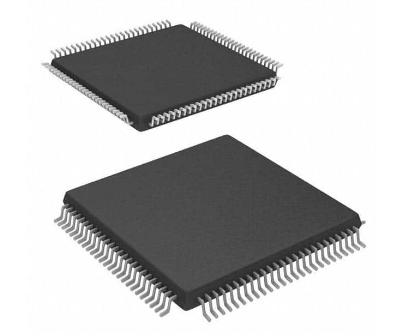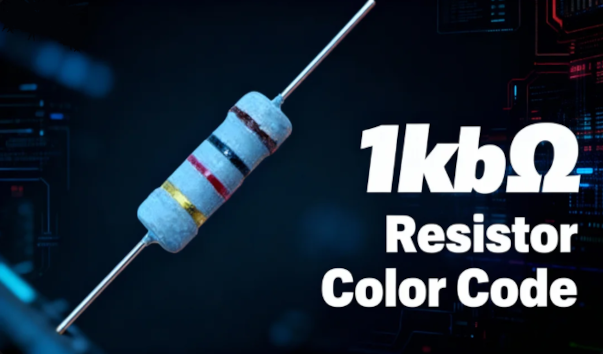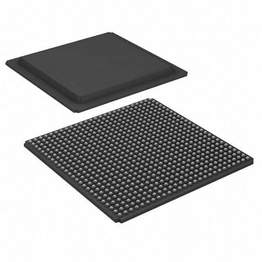What is a field programmable gate array (FPGA)?
Field Programmable Gate Arrays (FPGAs) have revolutionized the world of digital electronics by offering a flexible, high-performance solution for various applications. This article explores the definition, architecture, programming, applications, advantages, and future developments of FPGAs, while also highlighting trusted suppliers like unikeyic Electronics, which offers FPGAs from renowned brands such as Microchip Technology, XILINX, TEXAS INSTRUMENTS, and Lattice Semiconductor.
Field Programmable Gate Arrays - FPGAs Definition and Overview
FPGAs are integrated circuits that can be programmed after manufacturing to perform a wide array of functions. Unlike fixed-function Application-Specific Integrated Circuits (ASICs), FPGAs offer users the ability to configure the hardware according to specific needs, making them extremely versatile. This adaptability allows for rapid prototyping and iterative design processes, which are crucial in today’s fast-paced technology landscape.
Architecture of FPGAs
The architecture of an FPGA is designed to facilitate flexibility and performance. Key components of an FPGA include:Logic Blocks: These are the fundamental building blocks of an FPGA. Each logic block contains look-up tables (LUTs), flip-flops, and multiplexers, allowing complex logical functions to be executed.
Interconnects: The interconnects form the pathways that link various logic blocks and I/O pins. These programmable connections allow users to define how data flows between different parts of the FPGA, enabling customized functionality.
I/O Blocks: Input/Output blocks manage the communication between the FPGA and external devices. They can be configured to support various signaling standards, making FPGAs compatible with a wide range of technologies.
This architecture allows FPGAs to implement various designs, from simple logic functions to complex signal processing tasks.
Field Programmable Gate Arrays - FPGAs Programming and Configuration
Programming FPGAs requires specialized tools and languages. The most commonly used languages are:VHDL (VHSIC Hardware Description Language): A hardware description language that allows designers to describe the structure and behavior of electronic systems.
Verilog: Another hardware description language that is widely used for digital circuit design.
The programming process involves writing code that defines how the FPGA should operate, which is then synthesized into a configuration file. This file is uploaded to the FPGA, programming it to perform the desired function.
Additionally, development tools from companies like Microchip Technology and XILINX provide comprehensive environments for simulation, synthesis, and programming, enhancing the design workflow.
Field Programmable Gate Arrays - FPGAs Applications Across Industries
FPGAs are utilized in various industries due to their versatility. Key applications include:Telecommunications: FPGAs are employed in networking equipment for signal processing, protocol handling, and data routing.
Automotive: In the automotive industry, FPGAs are used for advanced driver-assistance systems (ADAS), allowing for real-time data processing from sensors and cameras.
Consumer Electronics: FPGAs are found in products like TVs and gaming consoles, enabling complex video processing and graphics rendering.
The adaptability of FPGAs makes them suitable for evolving technologies, ensuring they remain relevant across various sectors.
Advantages of Using Field Programmable Gate Arrays - FPGAs
FPGAs offer numerous benefits, including:Reconfigurability: Users can modify the functionality of an FPGA at any time, allowing for updates and changes without the need for new hardware.
Parallel Processing: FPGAs can execute multiple operations simultaneously, significantly enhancing performance for applications requiring high data throughput.
Rapid Prototyping: The ability to quickly program and reprogram FPGAs allows designers to test concepts and iterate on designs rapidly, reducing time-to-market.
These advantages make FPGAs an attractive option for many engineering projects.
Comparison with ASICs and microcontrollers
When comparing FPGAs with ASICs and microcontrollers, several factors come into play:Flexibility: FPGAs offer greater flexibility compared to ASICs, which are fixed in function once manufactured. Microcontrollers are easier to program but may not provide the same level of parallel processing capabilities.
Cost: While ASICs can be cost-effective for high-volume production, FPGAs are more economical for low- to mid-volume applications due to their reprogrammability and shorter development time.
Performance: FPGAs typically outperform microcontrollers in terms of processing speed and the ability to handle complex algorithms, making them suitable for demanding applications.
Field Programmable Gate Arrays - FPGAs Performance Characteristics
Key performance metrics for FPGAs include:Speed: FPGAs can achieve high-speed operation, making them suitable for applications requiring rapid data processing.
Power Consumption: Power efficiency is critical, especially in portable devices. FPGAs can be optimized for low power consumption, although their performance may vary based on the design.
Scalability: FPGAs can be scaled to meet varying performance requirements, allowing for designs to grow without complete redesign.
Field Programmable Gate Arrays - FPGAs Market Trends
The FPGA market is experiencing significant growth, driven by advancements in technology and increasing demand for customized solutions. Key trends include:Integration with AI: The rise of artificial intelligence (AI) applications is pushing FPGA manufacturers to develop devices that can efficiently handle machine learning tasks.
Miniaturization: As devices become smaller and more complex, FPGAs are being designed to take up less space while maintaining high performance.
Growing Use in Edge Computing: With the shift toward edge computing, FPGAs are being integrated into devices that process data closer to the source, reducing latency and bandwidth usage.
Field Programmable Gate Arrays - FPGAs Future Developments
Looking ahead, the future of FPGAs appears bright. Potential innovations may include:Advanced Materials: Research into new materials could lead to faster, more efficient FPGAs.
Enhanced Programming Tools: Continued improvements in design and simulation tools will make FPGA programming more accessible to engineers.
Increased Interconnectivity: As IoT devices proliferate, FPGAs may evolve to support more robust connectivity features, making them essential components in smart systems.
Common Challenges and Solutions
Despite their advantages, using FPGAs comes with challenges:Design Complexity: The flexibility of FPGAs can lead to intricate designs that are difficult to manage. Effective design tools and methodologies can mitigate this issue.
Resource Limitations: Depending on the application, FPGAs may have limited resources (logic elements, memory). Proper planning and resource allocation during design can address these constraints.
Trusted Brands for FPGAs
Microchip TechnologyMicrochip Technology is a leading provider of microcontrollers and FPGAs, known for their innovative solutions in embedded control applications. Their FPGAs are highly configurable and designed for various applications, ranging from consumer electronics to industrial automation.
XILINX
XILINX, now part of AMD, is one of the pioneers in FPGA technology. Their extensive range of FPGAs is widely used in telecommunications, automotive, and data center applications. Known for their robust performance, XILINX FPGAs support complex algorithms and high-speed data processing.
Texas Instruments
Texas Instruments offers a range of FPGAs and programmable logic devices that excel in low-power applications. Their focus on efficiency makes their products ideal for battery-operated devices and portable electronics.
Lattice Semiconductor
Lattice Semiconductor specializes in low-power FPGAs that are ideal for mobile and portable applications. They are known for their compact designs and power efficiency, making them suitable for a wide range of consumer electronics.
FAQs About Field Programmable Gate Arrays (FPGAs)
1. What is the primary use of an FPGA?FPGAs are used to implement digital logic designs, allowing for customization in applications such as telecommunications, automotive systems, and industrial automation.
2. How do FPGAs differ from microcontrollers?FPGAs are highly flexible and can execute multiple operations in parallel, while microcontrollers typically perform tasks sequentially and are more suited for control applications.
3. What programming languages are commonly used for FPGAs?The most commonly used languages are VHDL and Verilog, which are used to describe the hardware functionality of the FPGA.
4. Can FPGAs be used in real-time applications?Yes, FPGAs are often used in real-time applications due to their high processing speed and ability to handle multiple data streams simultaneously.
5. What are the power consumption characteristics of FPGAs?FPGAs can be optimized for low power consumption, but their power usage can vary depending on the design and complexity of the logic implemented.
6. Are FPGAs suitable for low-volume production?
Yes, FPGAs are more economical for low- to mid-volume production due to their reconfigurability and shorter time-to-market compared to ASICs.
Conclusion
Field Programmable Gate Arrays (FPGAs) represent a critical technology in the realm of digital design, offering unparalleled flexibility, performance, and adaptability. With the support of suppliers like Unikeyic Electronics, which provides quality FPGAs from brands such as Microchip Technology, XILINX, Texas Instruments, and Lattice Semiconductor, engineers can access the tools they need to bring innovative solutions to life. As the technology continues to evolve, FPGAs will play an increasingly vital role across various industries, paving the way for future advancements in electronic design.





















